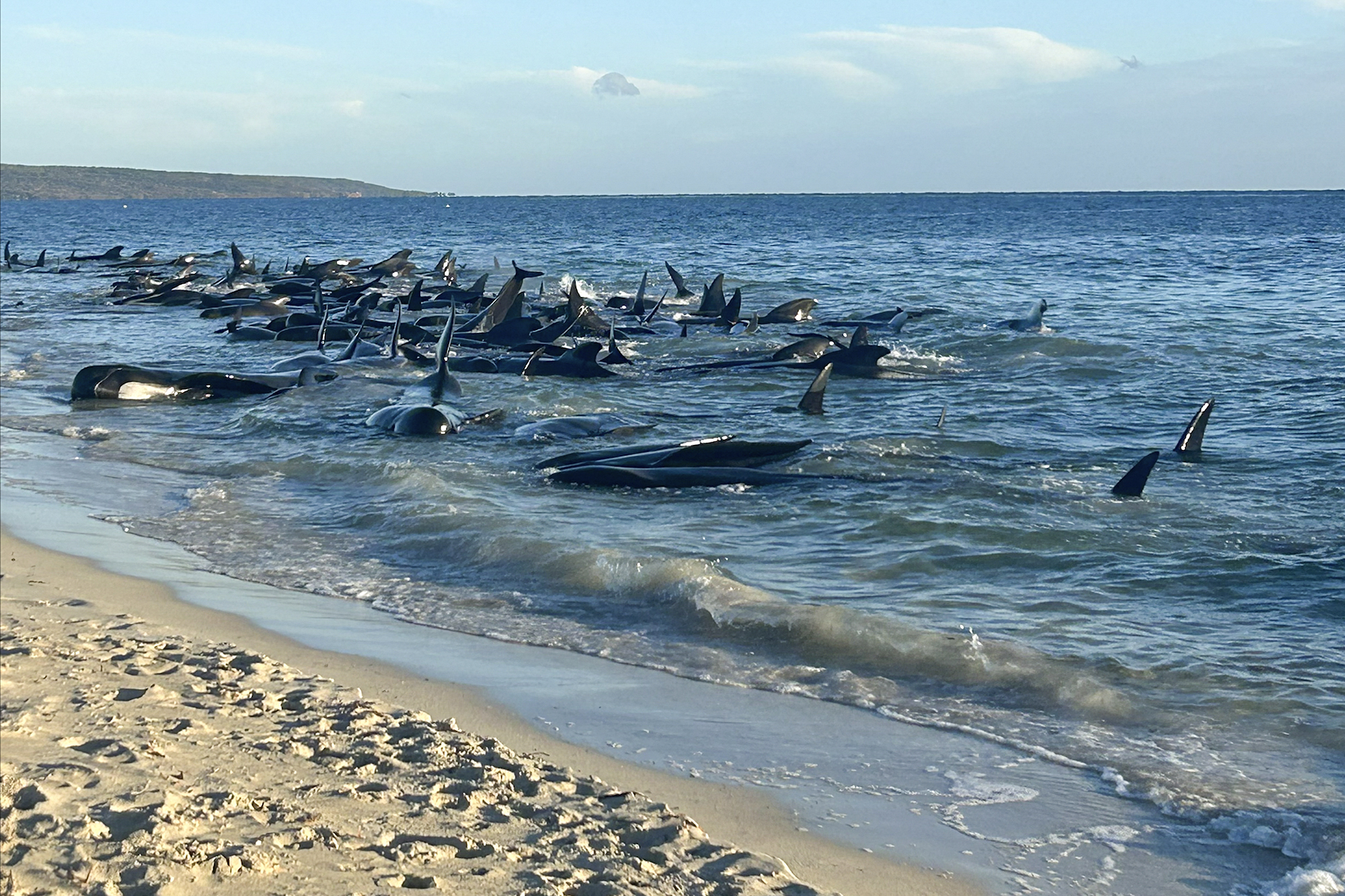WASHINGTON, DC, October 3, 2008 (ENS) - Sixteen years after Congress first ordered the U.S. Environmental Protection Agency to establish radiation release standards for the proposed spent nuclear fuel and high-level radioactive waste disposal facility at Yucca Mountain, Nevada, the agency has announced its final standards.
The Yucca Mountain site is located 90 miles northwest of Las Vegas in the Nevada desert on federal land at the edge of the Nevada Nuclear Test Site. The radioactive material the government wants to store there is currently in temporary storage at 121 sites around the nation.
"The Yucca Mountain standards are in line with approaches used in the international radioactive waste management community," the agency said, announcing the regulation on Tuesday.
The final standards will:
- Retain the dose limit of 15 millirem per year for the first 10,000 years after disposal
- Establish a dose limit of 100 millirem annual exposure per year between 10,000 years and one million years
- Require the Department of Energy to consider the effects of climate change, earthquakes, volcanoes, and corrosion of the waste packages to safely contain the waste during the 1 million-year period
- Be consistent with the recommendations of the National Academy of Sciences by establishing a radiological protection standard for this facility at the time of peak dose up to one million years after disposal.
Human exposure to radiation varies from natural sources, such as radon and ultraviolet radiation from the Sun, and other sources, such as medical X-rays.
The EPA estimates the average annual radiation exposure from both naturally occurring and human sources for a person living in the United States at 360 millirem per year, saying that the dose limit of 15 millirem per year for the first 10,000 years after disposal adds little to that.
U.S. & World
Kevin Kamps of the advocacy group Beyond Nuclear, takes issue with that assumption.
"EPA's statement tries to downplay the harm its proposed 100 millirems per year radiation doses at Yucca would cause by stating that we currently average 360 millirems per year of exposure from natural and artificial radioactivity. What EPA fails to mention is our current exposure to 360 millirems of radiation kills many thousands of Americans each year with fatal cancer," said Kamps.
"EPA's decision to allow an increase from 15 to 100 millirems per year downstream from Yucca Mountain dooms future generations to significantly increased rates of fatal cancer," he said.
The EPA said it is required to set standards consistent with the findings and recommendations of the National Academy of Sciences and satisfy a July 2004 court decision to extend the standards' duration.
The new standards drew opposition from environmentalists and from U.S. Senate Majority Leader Harry Reid of Nevada, a long-standing opponent of storing radioactive waste at Yucca Mountain.
"The agency decided just how much radiation you and I can live with," said Reid. "Let me be clear, there is no way this weak standard will breathe life into the Bush-McCain plan to dump nuclear waste in Nevada. Instead, it will breathe life into more litigation against this terrible project."
"The EPA has collaborated with the Department of Energy to tweak a standard that a federal Court of Appeals threw out in 2001 because it failed to comply with the Energy Policy Act of 1992 and would have left Nevadans dangerously unprotected against radioactive contamination," he said.
"If the repository at Yucca Mountain was ever actually built, the DOE does not deny that water infiltration would eventually corrode nuclear waste packages and radioactivity will inevitably leak into Nevada's groundwater," Reid warned.
"Instead of working to protect Nevadans from a public health catastrophe, this scandal-ridden EPA has chosen to simply make the rules more lenient so DOE can legally dump waste less than 100 miles outside of Las Vegas. This is unacceptable."
Republican Senator John Ensign of Nevada also opposes the new standard. "The risks associated with Yucca Mountain are no secret," said Ensign. "Yet the EPA has decided to disregard science and the health and safety of Nevadans to push this nuclear waste dump further into action.
"Instead of trying to dismiss the risks of Yucca Mountain, our country should be moving towards safe on-site nuclear waste storage," he said. "Senator Reid and I will continue to push for this new direction in nuclear waste storage and away from the flawed policy of Yucca Mountain."
The nuclear industry was pleased with the new standard.
Marvin Fertel, the Nuclear Energy Institute's executive vice president and chief nuclear officer, said, "The long-term dose limit established by this standard is more stringent than the proposed standard that it replaces, and is consistent with both the recommendations of the National Academy of Sciences and the radiation protection standards in place in virtually every country with a nuclear program around the world."
"A standard CAT scan generates up to 1,000 millirem of radiation dose in patients," said Fertel. "The 100 millirem standard is a conservative dosage standard globally accepted, and it demonstrates that EPA has made public safety of paramount importance."
Fertel says, "The repository is a key element of an integrated used fuel management program that includes interim storage of used fuel until recycling of used fuel closes the fuel cycle or permanent disposal is available. However, even with advanced fuel cycle technologies being developed, there still will be some quantity of final waste products that will require long-term geologic disposal."
The storage of the nation's highly radioactive nuclear waste and spent fuel at Yucca Mountain was approved by Congress and signed into law by President George W. Bush in 2002.
The Department of Energy has submitted a license application to the Nuclear Regulatory Commission for the construction. The preliminary process of checking over and 'docketing' the application was finished September 8, 2008.
The NRC now has a statute time limit of three to four years to complete its safety analysis and public hearings. The earliest estimated date for starting construction is 2013.
The Office of Civilian Radioactive Waste Management's current projected completion date for the project is 2017, but even if the NRC's review of the project goes well, the future of Yucca Mountain would still depend on the political climate in the United States.
Congress voted to cut the project's FY2008 budget from $494 million to $390 million, the lowest award since 2002, when the Yucca Mountain site was approved, continuing a four-year trend in which awards have been below the amounts requested by the Department of Energy.
In 2007, the Energy Department announced it was seeking to double the size of the Yucca Mountain repository to a capacity of 135,000 metric tons. Plans call for this material to be shipped cross country by truck and rail in spent nuclear fuel shipping casks from current locations in 39 states.
Copyright Environment News Service (ENS) 2008. All rights reserved.




